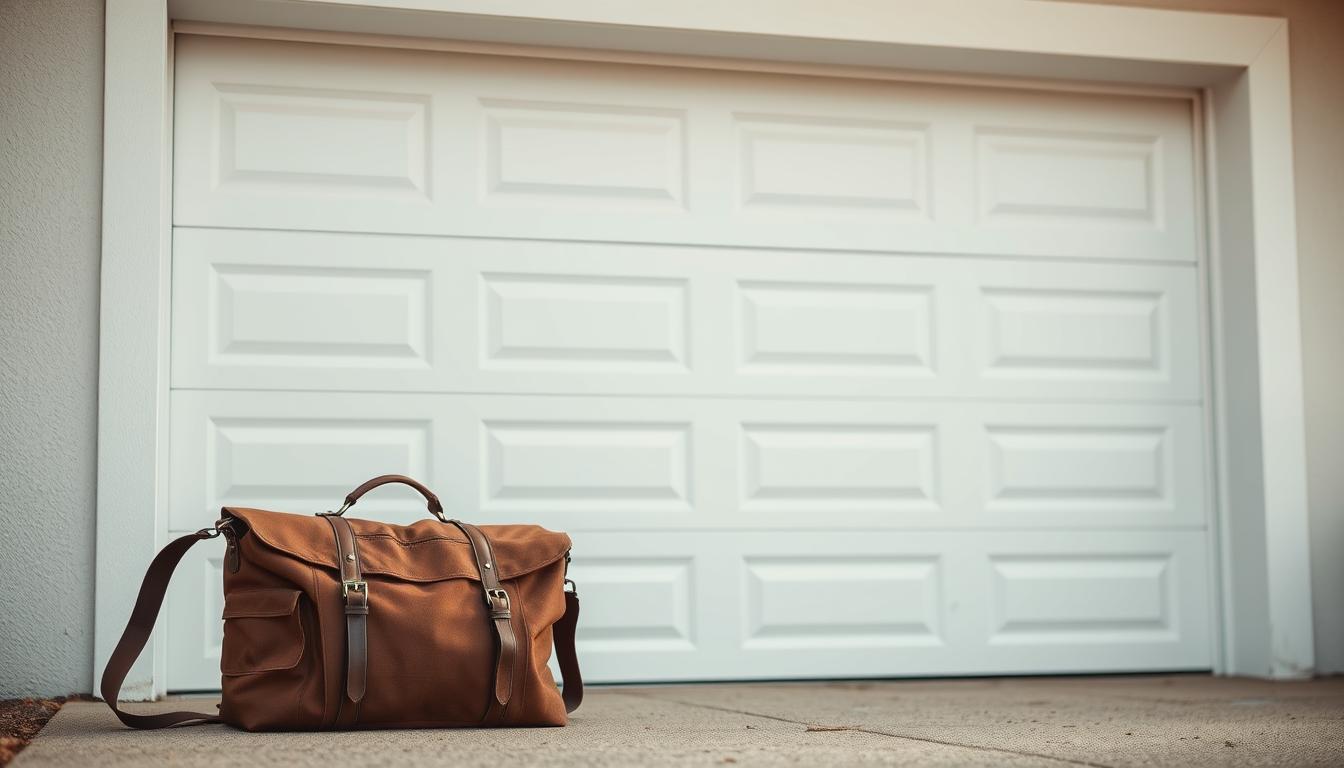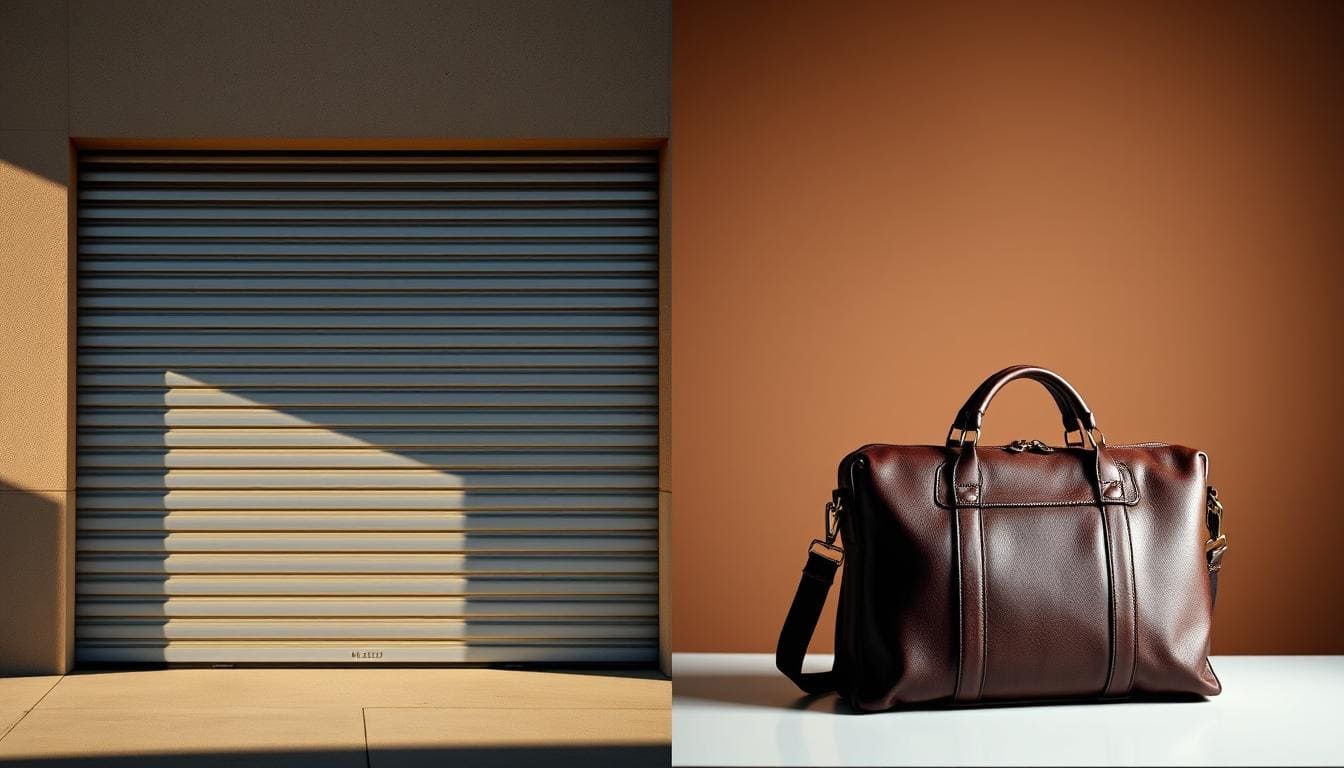Garage Door vs Satchel: A Practical Comparison for Everyday Use and Storage
Ever wondered which option suits your building or raiding needs better? These two items serve wildly different purposes, yet both play critical roles in construction and defence strategies. Let’s break down their core uses without getting lost in technical jargon.
The sturdy metal barrier acts as a reliable shield for protecting valuables. With 600 durability, it withstands significant damage and requires specialised tools to breach. For context, breaking through demands either nine explosive packs or 150 rounds of high-calibre ammunition – a testament to its toughness. To destroy garage doors, for example, one might consider the use of explosive 5.56 rifle ammo.
On the flip side, the unpredictable demolition tool creates opportunities during raids. While handy for breaking walls, such as a prison cell wall or an external wooden wall, its random detonation times and occasional failures make it a gamble. Think of it as a wildcard – useful in tight spots but never fully dependable. When breaching a gate high external or a chainlink fence gate, it often requires satchel charges to ensure effectiveness.
Choosing between them depends on your goals. Are you fortifying a base or planning a strategic strike? We’ll explore crafting costs, real-world applications, and smart resource management to help you decide. The strategic placement of door sheet metal or wooden window structures can greatly influence your defence strategy.
When considering durability and structural integrity, the debate of garage door vs stone wall often highlights the contrast between movable functionality and permanent resistance—an important perspective when comparing storage solutions like garage doors and satchels.
Key Takeaways
* Metal barriers excel at protecting high-value areas with their extreme durability
* Explosive packs work best for creating quick entry points during raids
* Breaching a reinforced barrier requires significant resources (9 charges or 150 rounds)
* Demolition tools have random detonation times and occasional malfunctions
* Base design should prioritise strategic placement of defensive structures
* Raiding plans must account for equipment reliability and material costs
Introduction to Garage Doors and Satchel Charges
When securing or breaching structures, two items stand out for opposite reasons. One offers steadfast protection, while the other delivers controlled chaos. Let’s unpack their core functions without technical fluff.
Defining the Vertical Security Solution
Picture a reinforced metal barrier that rolls upward instead of swinging outward. This space-saving design shines in cramped areas – no clearance needed like traditional wooden door setups. Bullets bounce off its surface, axes barely scratch it, and flames? Forget about it.
Why does this matter? Imagine protecting your storage room in a tight alley. Regular doors become liabilities, but vertical sliders handle business without elbow room. Sheet metal construction gives it a tank-like quality – you’ll hear attacks more than feel them.
Understanding Controlled Destruction
Now flip the script. Those cloth-wrapped explosives aren’t for the faint-hearted. Place one on a wall, and the clock starts… maybe. Detonation times wobble between 8-12 seconds, keeping raiders guessing. Ever had one fizzle out? You’re not alone – 15% dud rate keeps things spicy.
Here’s the kicker: when they work, they chew through stone and metal. But that gamble means carrying extras. Smart raiders pack double the charges needed – because sometimes luck beats planning.
Garage Door vs Satchel: Performance and Practicality
In high-stakes scenarios, every resource decision counts. Let’s compare how these tools handle pressure through three critical lenses.
Built Tough or Built Quick?
The reinforced barrier laughs at pickaxes and absorbs bullets like a sponge. With 600 health points, it’s the equivalent of parking a tank in your doorway. Bringing it down? That’ll cost you nine boom packs or 150 specialised rounds – enough to bankrupt small raiding parties.
Crafting both tools takes half a minute, but their shopping lists differ wildly. One needs 300 metal bits and gears – perfect for hoarders. The other demands four grenades plus rope, turning your workbench into a bomb factory.
Space Savers vs Game Changers
Vertical sliders shine in cramped corridors. No swinging space needed – just pure upward motion. Perfect for protecting loot rooms where every centimetre matters. Raiders hate this trick!
Demolition packs flip the script. When they work (85% of the time), they eat through stone like birthday cake. But that 15% failure rate? It’s why smart operators always carry spares. Nothing worse than a damp pop when walls should be crumbling.
Storage solutions tell the real story. One guards your treasures behind inch-thick metal. The other? It’s skeleton keys for places that aren’t yours. Choose wisely – are you building a fortress or plotting a heist?
Building and Crafting Insights
Crafting strategies separate rookies from veterans. Whether you’re stacking metal sheets or mixing explosives, smart material choices make all the difference. Let’s break down what it takes to create these game-changing items.
Crafting the Reinforced Barrier
Building a vertical security solution needs simple ingredients: 300 metal bits and 2 gears. That’s cheaper than most high external wooden walls! The real magic? It slides upwards, fitting spaces where swinging doors get stuck. Perfect for protecting loot rooms behind chainlink fence gates.
Demolition Kit Assembly
Satchel charges demand serious prep work. You’ll need 4 unstable grenades, a stash bag, and rope. Starting from scratch? That’s 480 sulfur and 720 charcoal – enough to make your furnace weep. Ever tried gathering 80 metal fragments mid-raid? Not fun, but essential for those prison cell wall breaches. If you’re wondering how many satchel charges it requires to destroy a garage door, you’ll need to prepare accordingly.
Material Showdown
Here’s the crunch: stone eats 2 charges, wood needs just 1. Metal window bars? They laugh at 5.56 rounds but fold to 3 packs. Smart builders mix materials – maybe external wooden walls upfront with reinforced window bars behind. Raiders? They’ll need triple the explosives to crack your combo. For instance, a double door requires satchel charges to breach effectively. When considering durability and security, the debate of garage door vs metal door becomes especially relevant for homeowners evaluating long-term storage solutions.
Garage Door vs Satchel
| Structure | Satchels Needed | 5.56 Rounds |
|---|---|---|
| Prison Cell Gate | 2 | 180 |
| Chainlink Fence | 1 | 90 |
| Double Door | 1 | 150 |
| Shop Front | 3 | 250 |
See the pattern? Stronger materials drain raiders’ resources. Mix sheet metal with stone layers, and watch attackers rethink their plans. Your storage stays safe, their explosives go boom – it’s a win-win.
Conclusion
The difference between holding your ground and breaching enemy lines lies in your toolkit. Reinforced barriers shine as defensive workhorses, swallowing bullets and saving precious space. Need to guard your stash? These sliding protectors let you fortify tight corners without sacrificing accessibility. When considering secure and convenient storage solutions, it’s essential to ensure your garage is in top shape—professional garage door repair in Burleigh Heads can make all the difference in maintaining reliable access and protection.
On the flip side, cloth-wrapped explosives rewrite raid strategies. Yes, they sometimes fizzle – but when they boom, stone and metal don’t stand a chance. Smart raiders always pack extras, turning those 15% duds into calculated risks.
Your choice boils down to priorities. Building a fortress? Stockpile metal sheets for reliable shields. Planning strikes? Gather sulfur and charcoal for demolition kits. Why limit yourself? Many pros use both – armoured bases by day, calculated breaches by night.
Remember: success hinges on resource management. Can you maintain steady metal supplies? Handle explosive material safely? Answer these, and you’ll master both defence and offence like a true survivor.
FAQ
How many satchel charges destroy a high external stone wall?
Breaking a high external stone wall typically requires eight satchel charges. This sturdy structure demands more explosives compared to wooden or metal alternatives due to its reinforced design. Remember, placement matters—cluster charges near the base for maximum impact.
What materials craft a durable sheet metal door?
Crafting a sheet metal door needs 15 metal fragments, 10 wood, and two gears. It’s stronger than wooden doors but less resource-heavy than stone walls. Pro tip: pair it with metal window bars for added security against raids. Consider a door wooden for added protection.
Are satchel charges effective against prison cell gates?
Yes, but you’ll need four satchel charges to breach a prison cell gate. These gates have similar durability to high external stone walls, so plan your explosives wisely. Always check for nearby defences like reinforced window bars first.
Can 5.56 rifle ammo be used in explosive crafting?
No, 5.56 rifle ammo isn’t used directly in satchel charges. However, it’s handy for defending your base while gathering materials like gunpowder and cloth for crafting explosives. Think of it as your backup plan during raids. While it’s not an explosive 5.56, it can still be useful.
How do chainlink fence gates compare to wooden doors for security?
Chainlink fence gates offer minimal protection—just one satchel charge destroys them. For better security, upgrade to sheet metal doors or high external wooden walls. Wooden doors? They’re a slight step up but still vulnerable to quick raids.
What’s the best way to store satchel charges safely?
Keep satchel charges in locked metal storage boxes away from high-traffic areas. They’re volatile, so separate them from flammables like fuel. Ever considered a stone-walled storage room? It adds an extra layer of safety.
Can reinforced window bars withstand explosive damage?
Reinforced window bars hold up better than standard ones but still require two satchel charges to break. Pair them with double doors for a layered defence strategy. Why risk weak points when you can reinforce?
Is crafting satchel charges cost-effective for raiding?
It depends. Satchel charges need 240 gunpowder and 20 cloth each—resource-heavy but silent compared to rockets. For quick strikes against wooden walls or shop fronts, they’re ideal. For stone structures? Plan for bulk crafting. Always remember that it requires satchel charges to destroy garage doors effectively.



